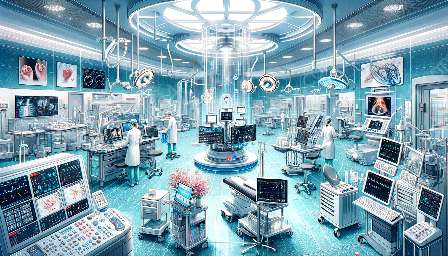The human skeletal system is a complex structure that provides support, protection, and movement for the body. This extensive topic cluster explores the anatomy, physiology, and medical devices related to the skeletal system, offering a comprehensive understanding of its importance in human health and function.
Anatomy of the Skeletal System
The skeletal system is composed of bones, cartilage, ligaments, and tendons, forming the body's framework. It consists of 206 bones that come in various shapes and sizes and are classified into two main divisions: the axial skeleton and the appendicular skeleton.
Axial Skeleton
The axial skeleton comprises the skull, vertebral column, and rib cage, providing protection for vital organs such as the brain, spinal cord, and heart.
Appendicular Skeleton
The appendicular skeleton includes the bones of the upper and lower limbs, as well as the pectoral and pelvic girdles, supporting movement and enabling physical activities.
Physiology of the Skeletal System
Aside from the structural support, the skeletal system is involved in vital physiological functions. It serves as a mineral reservoir, storing calcium and phosphorus, which are essential for bone density and strength. Moreover, bones produce blood cells in the bone marrow, contributing to the body's hematopoiesis.
Bone Tissue
Bone tissue is dynamic and undergoes constant remodeling through a process called bone remodeling. Osteoblasts are cells responsible for bone formation, while osteoclasts are responsible for bone resorption, maintaining the balance of bone mass and strength.
Joints and Movement
Joints enable movement through their articulations, allowing for flexibility and mobility. Various types of joints exist, including synovial joints, which are characterized by their fluid-filled cavities and range of motion.
Medical Devices and the Skeletal System
Medical devices play a crucial role in supporting the skeletal system, aiding in the diagnosis, treatment, and rehabilitation of skeletal-related conditions and injuries. These devices range from diagnostic imaging tools to orthopedic implants and assistive devices.
Diagnostic Imaging
Advanced diagnostic imaging techniques such as X-rays, CT scans, and MRI scans are essential for assessing the structure and health of the skeletal system. These tools aid in identifying fractures, joint abnormalities, and degenerative conditions.
Orthopedic Implants
Orthopedic implants, including joint replacements and internal fixation devices, are used to repair and stabilize bone and joint injuries. These devices are designed to restore function and alleviate pain, promoting the healing of skeletal tissues.
Assistive Devices
Assistive devices such as braces, splints, and prosthetics provide external support and mobility assistance for individuals with skeletal impairments. These devices aid in improving overall quality of life and restoring independence.
Common Medical Conditions
Understanding common medical conditions related to the skeletal system is essential for recognizing symptoms, seeking appropriate medical care, and preventing potential complications.
Osteoporosis
Osteoporosis is a condition characterized by decreased bone density and increased susceptibility to fractures, particularly in postmenopausal women and the elderly. It is essential to focus on preventive measures and treatments to maintain bone health.
Arthritis
Arthritis encompasses a range of inflammatory joint conditions, causing pain, stiffness, and decreased mobility. Early detection and management are critical in preserving joint function and minimizing disability.
Fractures
Fractures, or broken bones, can result from trauma, overuse, or underlying bone conditions. Prompt medical intervention, immobilization, and rehabilitation are essential for optimal recovery and prevention of long-term complications.
Conclusion
The human skeletal system is an integral component of overall health and well-being. Understanding its anatomy, physiology, and the role of medical devices in its maintenance is fundamental for healthcare professionals, researchers, and individuals seeking to preserve skeletal health and function.


